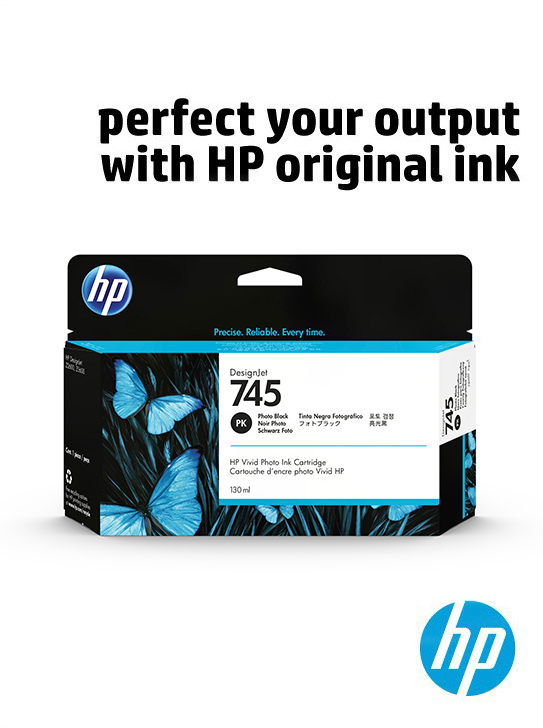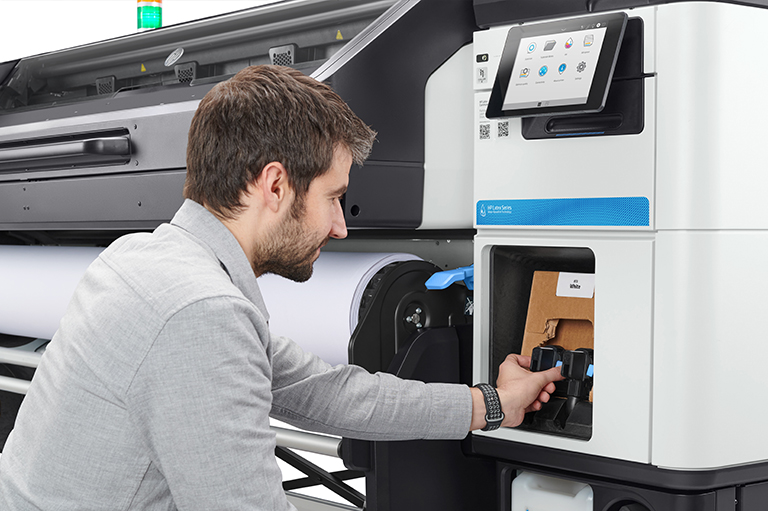Monthly Archives: March 2023
-
Read more ...
Print businesses are making it a high priority to diversify their large format print offering as customers increasingly demand unique ideas, more creative solutions, and new content. However, business leaders are aware something needs to be done, but many don’t know where to start.
The solution is to begin the journey of transformation so they can offer more competitive services that will shape the future. Not only will it help businesses serve existing customers better, it will enable them to enter new markets, innovate new print solutions, find fresh revenue opportunities, and scale up their offerings into the future.
Transformation is definitely on the minds of many print businesses. Two fifths regard diversification of their large format print offering as a high priority, according to a survey from Widthwise in 2020.1 This could come from providing new products and services to existing customers or finding innovative ways to build an additional customer base. There are many ways to evolve.Why now is the time to transform
Demand for wide format printers is expected to rise over the next few years. One estimate from Report Linker2 valued the global market at $3.4 billion in 2020, projecting it to reach $4 billion by 2027.
This, of course, follows the economic effect of the pandemic which depressed demand and revenues for many print businesses as offline retail opportunities were scaled down, conferences and events were cancelled, and travel was limited. In fact, revenue for the printing services industry declined an estimated 12.2% in 2020 as businesses cut back on advertising and marketing expenditures.3
However, the print world is an ever-changing one, and print businesses must stay sharp. The way to secure new business in the years ahead is to innovate and pivot your offerings to meet market demand, while also delivering reliable and efficient services.Innovating in new areas could benefit your business
The future holds many opportunities for PSPs to innovate, interior decor being a great example. This covers many things, from fine art to durable upholstery, but the size of the opportunity is massive. Just consider that the global digitally printed wallpaper market has been predicted to grow at 23.6% annually (CAGR) until 2025, to reach a total value of $10.4 billion, according to figures from Energias Market Research.4
Printed packaging and labels is another growth area, driven by the increasing use of printed corrugated material in retail-ready packaging as well as in e-commerce, according to market report publisher Smithers.5 The consultancy estimates that the total value for printed packaging and labels reached $431.6 billion in 2020 and will continue to expand at a CAGR of 2.6% to reach $491.1 billion in 2025.
How content requirements are expanding the possibilities
In addition, print businesses are dealing with customers who have unprecedented demands and expectations around content. They have witnessed the meteoric rise of web-based content creation platforms such as Canva and Zazzle. These enable consumers to remotely design and print professional posters and brochures and a full range of merchandise, using predefined and customizable graphics and designs.
What’s more, consumers have become accustomed to buying goods and services from easy-to-use e-commerce platforms that offer next-day, or even same-day, delivery. While providing stiff competition, it also opens up the possibilities for print businesses to expand their service portfolios through online and e-commerce.
Online platforms’ broad reach also enables businesses to explore new geographies and customer demographics. And if you don’t have the resources to expand your own digital content services, you could partner with an existing online provider to enter new web and mobile markets.Diversification and industry transformation mark the road forward
Transformation and diversification will mean different things to different businesses. For some, it will mean trying new initiative and channels to enter different markets with the latest offerings. For others it will involve exploring new materials, form factors or products. And for others still, it could mean a foray into the world of e-commerce and content services.
Whatever industry transformation means to you, now is the time to explore your options. The demand is there, the technologies and solutions exist. All that’s left is for you to adopt a growth mindset, explore the possibilities, and boldly carve a new path for your business.- www.imagereportsmag.co.uk/widthwise
- www.reportlinker.com/p03915683/Global-Wide-Format-Printers-Industry.html
- www.ibisworld.com/united-states/market-research-reports/printing-services-industry/
- www.globenewswire.com/en/news-release/2019/04/23/1808076/0/en/Global-Digitally-Printed-Wallpaper-DPW-Market-toWitness-a-CAGR-of-23-6-during-2019-2025.html
- www.smithers.com/resources/2020/nov/printed-paperboard-covid19-ecommerce-and-beyond
-
Read more ...
The quality of the consumables determines everything from the cost of each print, through how environmentally sustainable you are right up to how much downtime you experience on any day. The quality of print is determined by many things: the speed and accuracy of the print engine, the intelligence of the software running that engine, the quality of the media and so on. But one thing which is often neglected, is the quality of the printhead.
What to look for in a professional-grade ink cartridge
Cartridge composition plays a crucial part in determining how environmentally sustainable your printer is. The cartridge should be made of materials with as small an environmental footprint as possible. It should be easy to dispose of. That means not just that the material from which the cartridge is made should be easy to recycle. It must also mean that the inks contained in the cartridge can be handled and disposed of without expensive special procedures.
Alongside the quality of the ink itself, a key determinant of the accuracy, fidelity and vivacity of your print jobs is the science behind the printhead. The printhead must be able to deposit ink droplets with the highest degree of accuracy possible. The printer should be able to keep it clean and working at peak efficiency. And it should do this, while also minimizing the requirement for manual intervention and downtime.
How HP Latex consumables get the job done
The new HP Latex 700 and HP Latex 800 Printer series are designed specifically to meet these challenges. Instead of conventional print cartridges, made of plastic, these large-format printers use recyclable HP Eco-Carton ink cartridges. The outer cardboard of which these innovative consumables are made can easily be recycled at any local cardboard and paper recycling programs.
By replacing plastic cartridges with the new HP Eco-carton ink cartridge, the amount of plastic used in each consumable is reduced by up to 80% and the CO2 associated with that cartridge by up to 66%. And where HP printers and supplies do still contain plastics, these are often recycled plastics, created with post-consumer electronics, soda bottles, UL-validated ocean bound plastics, coat hangers, and empty Original HP ink cartridges.
The inner linings, containing the ink, can be disposed of through the HP Planet Partners program. And because water-based HP Latex Inks contain no hazardous air pollutants (HAPs), this not only makes handling easier, it also makes disposal simple and stress free. Taken together, these design attributes mean you send zero supplies-related content to landfill when you use these HP printers. And HP Latex inks deliver vivid colours with striking contrasts.
These inks are delivered through an HP Latex Printhead. These are capable of delivering inks to the page in droplets as small as 10-picoliters. A picoliter is a trillionth of a liter. With such tiny ink droplets, delivered with pin-point accuracy thanks to the precision of the software and engineering in the print systems, print jobs are clear, sharp and vibrant.








